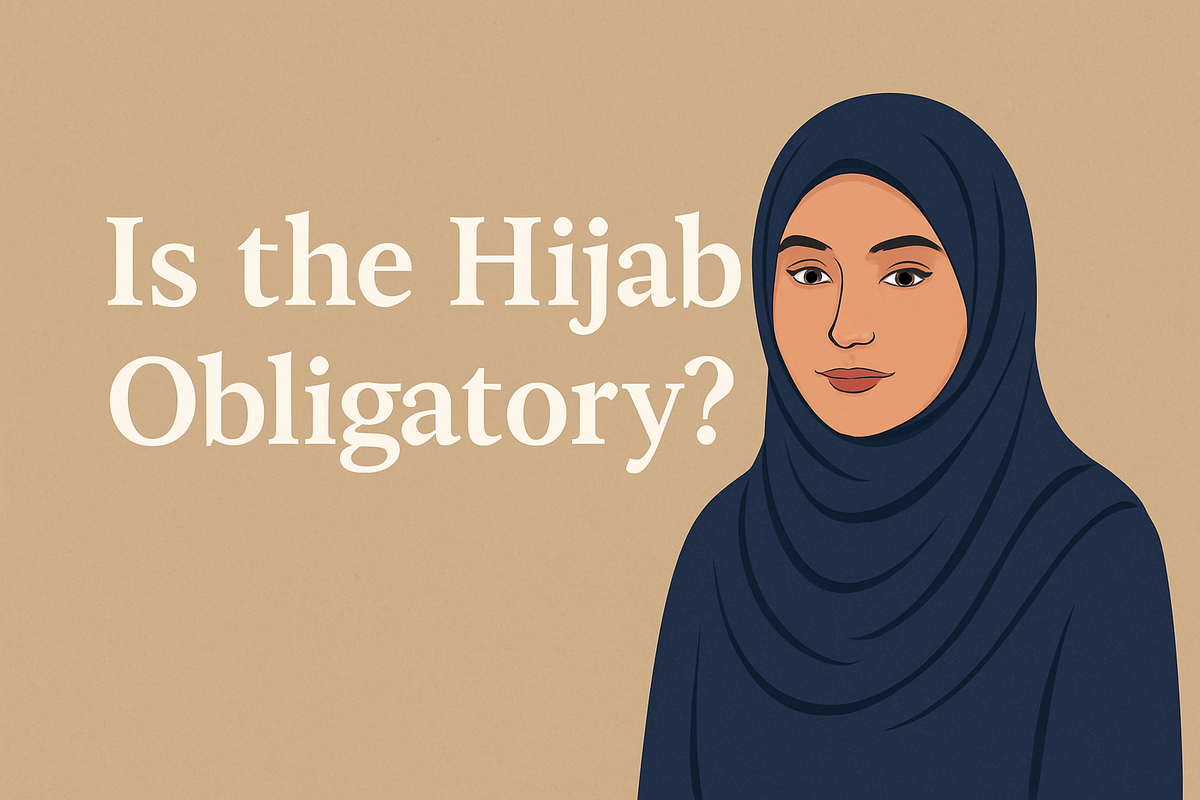

By Dr. Tim Orr
Picture this: A young woman walks through a bustling street in Cairo. The fabric of her hijab (head covering) catches the golden light as she moves past shops and scooters. In Paris, another woman removes her headscarf thousands of miles away before entering a government building, cautious of the law. Meanwhile, in Iran, a third faces the threat of imprisonment simply for choosing not to veil at all.
What connects these women isn’t just a piece of cloth—it’s a complex symbol woven with threads of faith, power, protest, and deeply personal conviction. The hijab is no longer just a private garment. It has become a global flashpoint. And behind every choice to wear it—or not—is a story that deserves to be heard.
A Symbol That Divides and Unites
Few religious symbols spark more debate than the hijab. Throughout this article, I will explore how its meaning has shifted across time and place, from scripture and early Islamic history to colonialism, political movements, and the lived experiences of Muslim women today. It’s been politicized, misunderstood, and weaponized across cultures and continents. A 2021 Pew Research Center survey found that in many Muslim-majority countries, large majorities support a woman’s right to choose whether to veil. Yet in countries like Iran and Saudi Arabia, not veiling can carry harsh legal consequences. That tension between freedom and force reveals the deeper question at the heart of it all: What does Islam actually say about the hijab?
The answer, it turns out, isn’t as black and white as many assume.
What Does the Qur’an Really Say?
At the heart of this debate is a single verse: Surah 24:31. It instructs believing women to “lower their gaze, guard their private parts, and draw their khimār over their juyūb.” In Arabic, khimār refers to a cloth or covering, and juyūb—derived from the word jayb, meaning hollow or pocket—is generally interpreted to mean the chest or bosom.
According to the December 30, 2024 episode of Exploring the Quran and the Bible titled "Does the Qur’an Force Women to Cover Their Heads?" this interpretation diverges sharply from traditional jurisprudence. Rather than viewing the verse as instituting a religious obligation to cover the hair, well-respected scholar from Notre Dame, Gabriel Said Reynolds, suggests it clarifies modesty norms already in place, indicating the Qur'an was regulating cultural norms rather than establishing a universal dress code..
This reading challenges centuries of Islamic jurisprudence that treated the hijab as an absolute religious obligation. Many classical scholars interpreted the khimār as a required head covering. Still, their rulings were shaped by the cultural norms of their time, norms in which head coverings were already common across faiths and societies. Reynolds argues that this legal tradition may have fused cultural practice (‘urf) with divine law (shari‘a), leading to a broader assumption of obligation than the Qur’an explicitly states.
The Long Journey of the Veil
To grasp how the hijab evolved, I will turn to a book I read a few years ago when studying the subject of Islamic feminism I was writing for a paper I published by a journal by the University of Tehran by Leila Ahmed, a Harvard Divinity School professor whose groundbreaking book A Quiet Revolution (2011) traces the veil’s journey across civilizations and centuries. Veiling, she shows, didn’t begin with Islam. It was already practiced by elite women in ancient Assyrian, Persian, Greek, and Roman societies—often to mark class distinction rather than spiritual devotion.
In the earliest years of Islam, veiling wasn’t universal. Some women were veiled even within the Prophet Muhammad’s household, while others did not. What mattered most wasn’t fabric, but character—how one carried themselves modestly in public.
When Colonial Powers Unveiled Women
The hijab took on an even more charged meaning during the colonial era. European powers painted veiled Muslim women as oppressed, using their supposed “liberation” to justify colonization. In Algeria, for example, French authorities staged public unveiling ceremonies. But instead of encouraging women to abandon the veil, these acts had the opposite effect—veiling became a symbol of defiance, dignity, and national pride.
Rather than bowing to Western norms, many women embraced the hijab as a badge of cultural and religious identity. In this context, the veil ceased to be merely religious and became political.
Revival and Reclamation: The Rise of Political Islam
Fast forward to the 1970s and ’80s. As political Islam surged across the Middle East, the hijab was once again reimagined. In places like Egypt, where movements like the Muslim Brotherhood gained influence, veiling became associated with piety and resistance to Western secularism.
But this wasn't always about state power or societal pressure. Many young Muslim women began donning the hijab on their own terms—as a declaration of faith, a rejection of consumer culture, or an act of spiritual authenticity. For some, it was a quiet rebellion against the pressure to conform.
A Quiet Revolution in the West
Leila Ahmed’s most striking observation is the hijab’s transformation in the West, which carries vastly different meanings compared to non-Western contexts. In countries like Iran and Saudi Arabia, the veil is enforced by the state, often evoking resistance and protest. Still, in the West, it is more often a personal and voluntary choice shaped by individual conviction, spiritual discipline, and cultural assertion. Here, far from the coercion of state enforcement, Muslim women often choose the veil voluntarily. In interviews, they describe it not as a burden but as an expression of agency, a way to reclaim their identity in a culture that often exoticizes or objectifies them.
One woman put it this way: “Wearing the hijab is how I say, ‘Judge me by my mind, not my body.’” For others, the hijab is a sacred discipline—something that deepens their relationship with God in a secular world.
This is the heart of Ahmed’s “quiet revolution”: Muslim women redefining the veil on their terms, outside the boundaries of patriarchal fatwas or state-imposed mandates. In a time of rising Islamophobia, many are choosing the hijab as an act of courage and conviction.
So, Is the Hijab Required?
In short, the answer varies depending on whom you consult—and how you read.
Classical scholars often said yes. However, as Reynolds and others have shown, that judgment was deeply shaped by the cultural norms of their era. The Qur’an doesn’t explicitly command women to cover their hair. It emphasizes modesty, allowing interpretation based on culture, context, and conscience.
For some, wearing the hijab is an expression of faith. For others, it’s a symbol of social control. And for many women worldwide today, it’s a meaningful choice that reflects their values, not just their obligations.
Modesty, Meaning, and Listening Well
The hijab isn’t one thing. It’s many things at once: a religious symbol, a cultural artifact, a personal decision. For some, it’s about obedience; for others, about identity. And for still others, it’s about freedom, not the freedom to veil or not to veil, but the freedom to decide for themselves.
Instead of asking, “Is it mandatory?” perhaps we should ask, “What does it mean to her?” That question opens the door to understanding, and understanding, as always, begins with listening.
References
Ahmed, L. (2011). A Quiet Revolution: The Veil’s Resurgence, from the Middle East to America. Yale University Press.
Exploring the Quran and the Bible. (2024, December 30). Does the Qur’an Force Women to Cover Their Heads? [Video]. YouTube. https://www.youtube.com/watch?v=K-5xWWfYIpo
Who is Dr. Tim Orr?
Tim serves full-time with Crescent Project as the assistant director of the internship program and area coordinator, where he is also deeply involved in outreach across the UK. A scholar of Islam, Evangelical minister, conference speaker, and interfaith consultant, Tim brings over 30 years of experience in cross-cultural ministry. He holds six academic degrees, including a Doctor of Ministry from Liberty University and a Master’s in Islamic Studies from the Islamic College in London.
In addition to his ministry work, Tim is a research associate with the Congregations and Polarization Project at the Center for the Study of Religion and American Culture at Indiana University Indianapolis. His research interests include Islamic antisemitism, American Evangelicalism, and Islamic feminism. He has spoken at leading universities and mosques throughout the UK—including Oxford University, Imperial College London, and the University of Tehran—and has published widely in peer-reviewed Islamic academic journals. Tim is also the author of four books.
